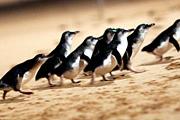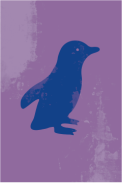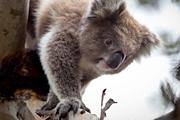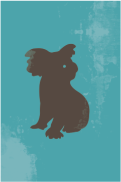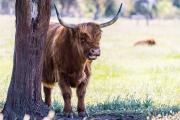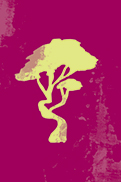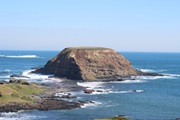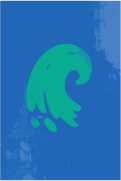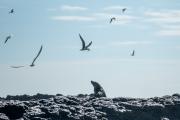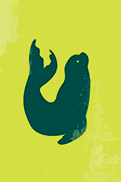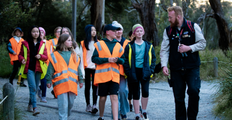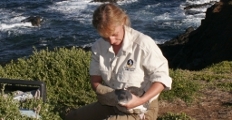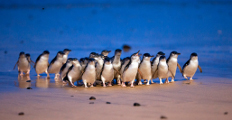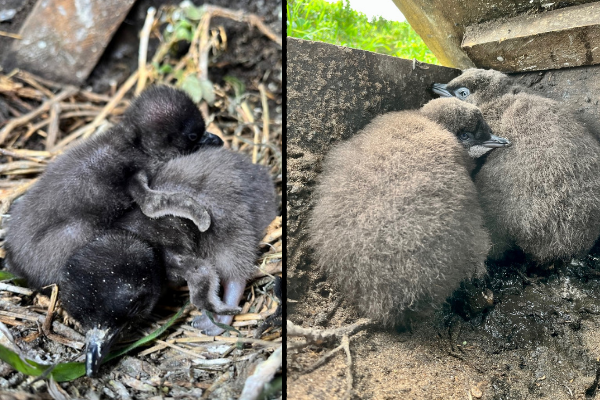Know Your Nature Parks - Spring at the Nature Parks
With flowers bursting forth, migratory birds arriving and wildlife in breeding mode, spring is an exciting time in nature on Phillip Island (Millowl).
In the skies - birdlife
Hooded plovers
With spring comes the nesting season for hooded plovers! Fledglings from last season are seeking their own territory away from other adults and can be distinguished from the adults by a head of mottled grey plumage.
Mature birds have formed their mating pairs, with some returning to previous partners and others forming new relationships. The conservation team is monitoring ~14 pairs, which soon will choose a territory and begin nesting. Each pair will work tirelessly from now on to defend their lot until autumn next year.
This threatened species is susceptible to the changing tides, due to nesting on the high tide line. Keeping clear of signed and roped nest refuge areas on beaches is one way you can help this vulnerable species have a successful nesting season.
As always, please walk your dogs on leashes and find out Where can I walk my dog?
Image 1: Fledgling hooded plover
Short-tailed shearwaters
The short-tailed shearwater breeding season on Phillip Island (Millowl) also begins in spring. After saying goodbye earlier this year, over a million birds are expected to arrive home to their breeding grounds after spending the last five months around the Bering Sea near Alaska.
Keep your eyes on the sky at sunset along the coast to see these incredible birds returning home after a day’s fishing. Remember to keep to tracks in the dunes so you don’t accidently trample their sand dune burrows.
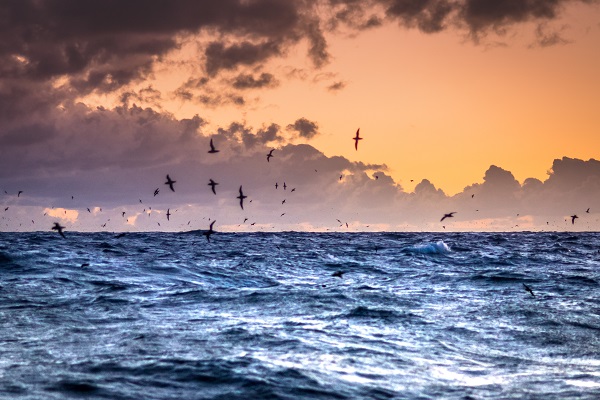
Image 2: Short-tailed shearwaters at sunset
Other bird life
The bird life on Phillip Island (Millowl) in spring is abundant and you don’t need to look very far to spot our feathered friends. This spring, keep a look out for:
- Waterbirds such as ibis, spoonbill, egrets and ducks nesting in the trees and reeds of the brimming wetlands.
Image 3: Ibis and spoonbills at Rhyll
Image 4: Blue billed duck at Rhyll
- Masked lapwing chicks emerging and making the run for food on ovals and parks or nestling under parents for warmth.
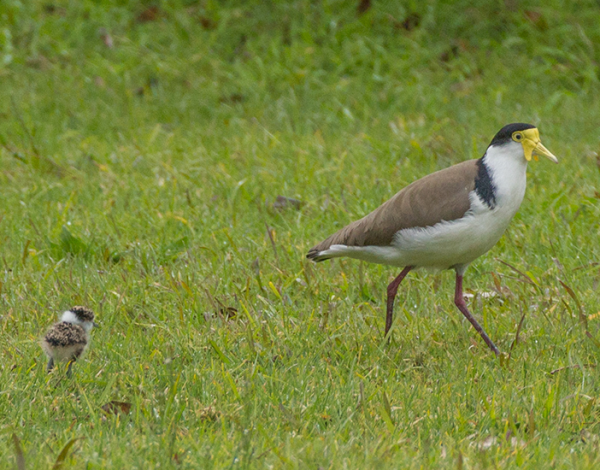
Image 5: A masked lapwing and chick
- Latham’s snipe return from Japan to feed along the muddy vegetated edges of wetlands and drainage reserves.
- Young sea eagles fledging and looking for fish along the coast, often being hassled by ravens and lapwings!
On the ground
Echidnas
The spring is still echidna breeding season, so watch out for echidna trains! If an echidna visits your backyard - keep your pets inside and give the echidna space to move on in its own time. When on the road, please give way to echidnas crossing the road as they have large territories and may have puggles (young) stashed away nearby.
Eastern barred bandicoot
This September and October monitoring of Eastern barred bandicoot populations will begin again, by live trapping to assess the bandicoots for their body condition and breeding status. The research team will also collect genetic samples to assess genetic diversity, and to estimate the density of the population. A small army of volunteers help our staff set the traps and then head out at night to check what has been caught. The results tell us how the populations are changing over time, and how they are responding to threats such as feral cats, diseases, and changing environments. As always, look out for these nocturnal critters on the roads at dusk, night and dawn.
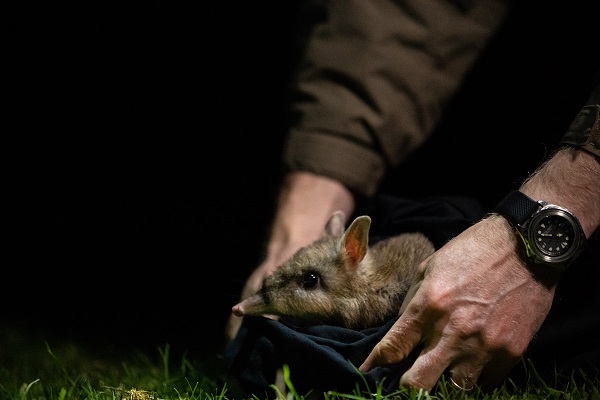
Image 6: Eastern barred bandicoot trapping
Bush stone-curlews
The bush stone-curlews have settled in well to their aviary homes. They are all maintaining healthy weights and displaying natural behaviours such as foraging through mulch and leaf litter for bugs, as well as occasionally catching their own wild mice! Spring is a great time of year to walk through the Koala Conservation Reserve woodlands and enjoy hearing the distinct sounds of the bush stone-curlews. Hopefully this will be a common sound on Phillip Island (Millowl) in the future.
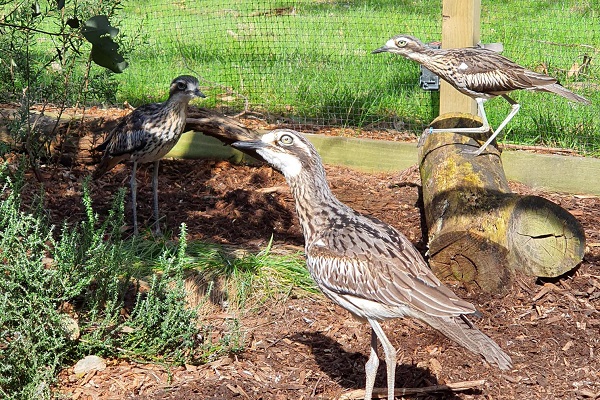
Image 7: Bush stone-curlew males
Tracks and trails
Breathe in the fresh eucalypts and spot springtime blooms at Oswin Roberts Reserve, this beautiful walk will allow you to enjoy the soundscape of native birds singing in the trees in one of the last remnant patches of native woodland on Phillip Island (Millowl). Help us protect this rare habitat by keeping to tracks.
To choose your walk at the reserve, head here.
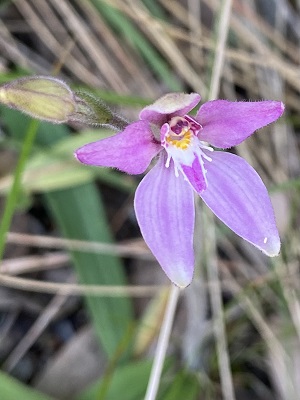
Image 8: Pink fairy orchid
Flora
With so many ecological vegetation classes represented on Phillip Island (Millowl), there is a diverse variety of terrains to explore and with them come a changing palette of plants to take delight in. Wildflowers are warming up the eyes at this time of year and if you are lucky, you might even spot some of the locally rare orchid species!
Coast beard-heath (Leucopogon parviflorus) has delicate white flowers, that once on the ground resemble white star-shaped confetti. This plant is important for dune stabilisation and can be found from coastal areas to woodland walks. The wattles that brightened the final weeks of winter are still glowing yellow in many areas – there are more than four types of wattle to spot, all with varying flowers, see if you can spot them all! Prickly Moses or hedge wattle might look prickly to touch, but it is ideal habitat for small birds and other critters as it protects them from predators.
Image 9: Barb Martin Bushbank Nursery
Springtime blooms
Groundcovers such as coast swainson-pea (Swainsonia lessertifolia) with its delightful purple flowers dot across sand dunes, accompanied by running postman (Kennedia prostrata) which has bright red flowers and an interesting leaf shape. Spot these species on one of the coastal walks such as at Cape Woolamai, you might even be lucky enough to spot the pink fairy orchid (Caladenia latifolia).
The bell flowers of the wonga vines and star-shaped flowers of the clematis can be seen draping over canopy branches. In some of the damper areas there are patches of white elderberry flowering, while the creamy flowers of swamp paper barks (Melaleuca ericifolia) can be seen across the island, they’re especially noticeable on the roadsides!
Flowering plants to look out for in spring
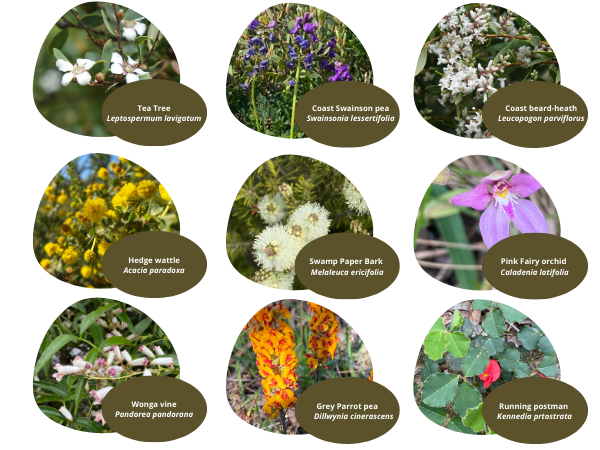
Figure 1: Spring blooms
Woolamai Beach Surf Lifesaving Club (WBSLSC)
Works are well underway at WBSLSC. There was extensive planning to approve the implementation of this infrastructure, with careful consideration of the dune system throughout planning and construction. An overabundance of wind-blown sand was relocated from adjacent to the clubhouse onto the Woolamai Beach foredune, as can be seen in the before shots from 2020. Proven biodegradable material sand fencing techniques will assist relocated sand and associated vegetation to establish. Aiming to provide nourishment to the foredune for natural processes to occur.
The Nature Parks and WBSLSC volunteers will perform follow-up dune regeneration (sand fencing and weed removal). The entry pathway has also been redeveloped using concrete for safe access and ease of maintenance (sand clearing). In future a new skip bin area will be established with screen fencing and a gate. With wind walls and deflection plates to be placed minimising sand impacting infrastructure.
In the trees
Koalas (Gurrborra)
The koala joeys are growing fast and continue to turn heads at the Koala Conservation Reserve! During spring, koalas generally become more active as the trees begin to produce new growth. This is also the time of year that our rangers conduct annual health checks for the koalas.
Image 10: Koala and joey
On our shores and in our waters
Penguins (Guyup)
Spring has truly sprung for our little penguins. We are starting to see a lot of eggs in the colony, with more being laid every day. These eggs take five weeks to hatch, so we can expect to hear the sounds of chicks at the Penguin Parade any day now.
Little penguin spring breeding
Spring breeding is triggered by an increase in sea surface temperature, that coincides with a peak in ocean productivity. It has been shifting earlier for our penguins as ocean temperatures increase. This year we have seen breeding start about a month earlier than what we would usually expect to see!
An early start to breed usually means a bumper season, as it gives the penguins the opportunity to have two (and sometimes even three) breeding attempts in the one season.
The summer ahead looks to be hot and when it gets too warm, penguins need to travel further and work harder to catch their food. An early start will hopefully mean we see a good result in the first breeding attempts, before the heat of summer hits.
Penguin Parade counts in July were the highest they have been in the past three years – an average of 1,490 penguins crossed the Penguin Parade each night in July, almost double the number from the previous two years. This would have been due to the courtship and nest building period of penguins gearing up to lay their eggs.
Image 11: Little penguin chicks growing
Seal Rocks news
Out at Seal Rocks, the females are getting bigger with developing pregnancies. The busy mums are working hard to feed last summer’s pup whilst growing the new one. They will start to wean their pup from last summer before the birth of their new pup. Last summer's pups are getting bigger and will soon be supplementing their milk diet with food they catch themselves, preparing for weaning before the onset of the next breeding season that starts at the end of October.
Fieldwork to research the impact of entanglements on the fur seals will cease by the end of October to allow the seals to breed without interference and to keep the researchers safe. The bull seals can be very aggressive and territorial during this time.
Wildlife rescue – who to call
There has been a change in how we respond to injured wildlife on Phillip Island. We are working closely with Wildlife Victoria to provide 24/7 rescue, care and rehabilitation services.
If you spot injured wildlife, please report this directly to Wildlife Victoria by calling (03) 8400 7300.
Please share this number with family and friends to support the appropriate rescue and care of injured wildlife.
Keeping wildlife wild – the greatest thing you can do for wildlife is to keep it wild. Please always keep your distance and remember how lucky we are to be able to share our beautiful island home.
Share Your Nature Parks
Don't forget to share your Nature Parks images with us by using our hashtag #PhillipIslandNP





